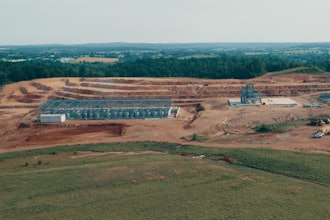By PAUL LIVINGSTONE, Senior Editor, R&D Magazine
In 1957, the Russians launched Sputnik. Two students at the Advanced Physics Lab at Johns Hopkins were able to find the signal that the Russians were broadcasting from the tiny satellite, and used it find the exact location of the silvery ball. It was a harmless trick until the government asked them to reverse the method to find objects on the ground. The purpose? The military wanted a way to locate nuclear submarines anywhere on Earth. The basis for Global Positioning Systems, once a top government secret, is now used to find Starbucks.
In 1976, Steve Sassoon used the newly-invented solid-state imager—a charge-coupled devices—to build the world’s first digital camera. More than 1,000 patents followed, but it took Kodak more than 25 years to abandon its reliance on film and recover lost ground.
These anecdotes heard from author Steven B. Johnson and Sassoon at Front End Innovation 2010 reveal just how difficult it is to pin down the concept of innovation. Now in its final day at Boston’s World Trade Center, the conference connects primarily entrepreneurs and product developers to several dozen speakers from companies as disparate as Ericsson and Nestle, Target and Google. The key quest for most attendees was finding a quick and effective path to a profitable (there’s one definition of innovative) product.
Perhaps the best example of what they were looking for was toted around by a good number of trendy tech hounds: Apple’s iPad. But while no representative from Cupertino was on hand to share their product development kung fu, it’s clear that even companies with a far lower profile wrestled constantly with the unceasing mission to bring innovative products to customers.
One of the most interesting perspectives came from Jurgen Seitz of United Internet Media, who quickly reviewed the characteristics that defined his most successful clients. He says his digital media company, which helps other companies launch software products, has noticed that the companies that succeed best do not waste time writing out an in-depth business plan. They also don’t set specific product goals. They don’t even test prototypes internally. Instead, they find a way to make a product as quickly as possible and use the public to test it.
Software is a constantly evolving product that typically must swim or die, so there is a lot of sense to this approach. But for manufacturing firms, I think, the notion of putting product prototypes out on the market without considerable in-house development would be far too scary a notion. And for biotech or medical, it might be illegal. In his presentation, Seitz used as one of his slides a clay mock-up of a car—I don’t think car manufacturers will take up this approach anytime, but they could certainly use some customer feedback on the software they use in the dashboard.
Also compelling were the tales of big companies trying to grapple with fundamental shifts in technology. Nestle USA, for example, is trying to gauge the impact of nanotechnology on its food products. More than a dozen food products now use nanotechnology in the packaging, including a ketchup bottle coated so that the product slides out easily. But nano-engineered products haven’t yet entered the production of the food itself, said Olga Patel of Nestle, but it’s only a matter of time before they do.
Even Google, which held an open-ended presentation on the crucial role that conflict has in idea generation, is clearly uncertain about where to go in some of the world’s most rapidly changing markets. They have identified them—Surit, India; Beijing, China; Lagos, Nigeria—but how to address the needs of people who live there with technology that is both effective and affordable is going to be difficult. To help them out, they’ve defined a design philosophy that breaks down what goes in to a “Googley” product.
Some of the other top topics at Front End Innovation:
Open Innovation, OI: It was on the tip of everyone’s tongue, and often part of the pitch made the numerous innovation software vendors exhibiting at the event. Incubators, ventures, partnerships, open collaborative campuses—these and other strategies for accelerating both the idea process and product development had wide appeal among even the largest companies. At the conference Xerox probably exemplified this approach the best, having privatized the Palo Alto Research Center for economic sustainability, but also opening research centers around the world.
Sustainability: More than one company (notably Unilever) talked about they want to grow business but without growing environmental impact. The key, they said, was to make “green” part of the entire value proposition of a product, instead of an added cost.
Public relations: We all know that effective communications are crucial when selling products to customer. But it’s important to the innovation process as well. Steve Sassoon of Kodak illustrated this well in his talk about the nearly 20 years between the invention of the digital camera and its first commercial introduction to the public.
Product Development: As I mentioned earlier with Seitz’s experience, the notion of abandoning business plans, ditching product goals and cutting straight to testing new products against the public is a scary thought for most companies. But for the right kind of product, this can break a company out of costly delays and unnecessary introspection. Time is also a factor: the average time to launch any new product is close to 12 months. Shaving months or even weeks away can make the difference.
What inpires you to innovate? Drop me an e-mail at [email protected].


















